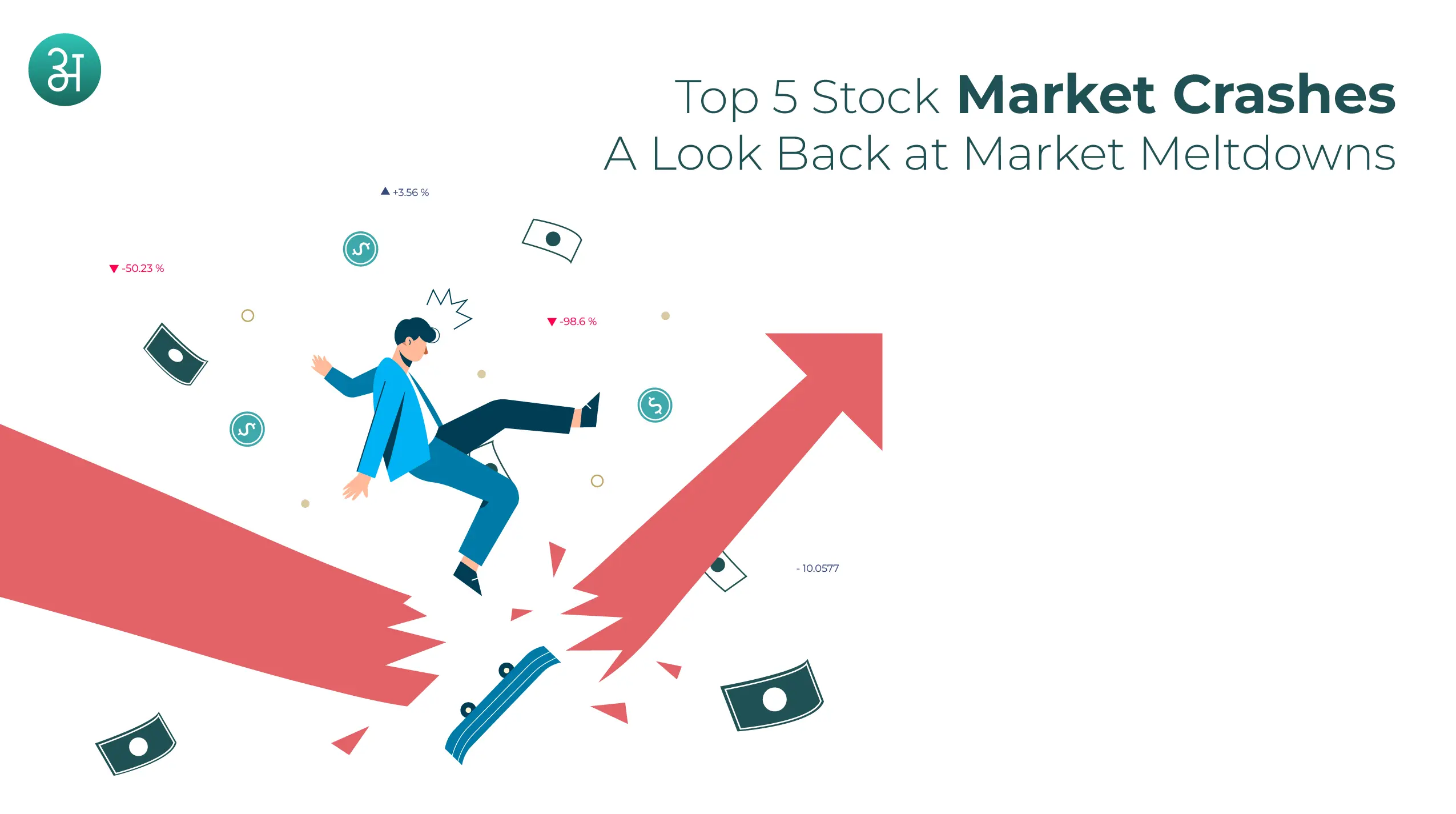
The history of the stock market is littered with periods of boom and bust. While bull markets can create significant wealth, crashes can wipe out gains and leave investors scarred. Understanding these historical events can help us navigate the ever-changing market landscape. Niveshartha, your trusted partner in stock market research, brings you a closer look at the top 5 stock market crashes and the valuable lessons they impart.
1. Wall Street Crash of 1929 (The Great Crash):
This crash, widely considered the most devastating, began in October 1929. Fueled by rampant speculation, easy credit, and overvalued stocks, the market suffered a series of cascading declines. The Dow Jones Industrial Average (DJIA) plummeted by a staggering 89% by 1932, ushering in the Great Depression, a decade-long economic hardship.
Lesson:
Unrealistic valuations and excessive speculation can lead to catastrophic crashes. Investors should prioritize companies with strong fundamentals over fleeting trends.
2. Black Monday (1987):
On October 19, 1987, the DJIA experienced a one-day drop of 22.6%, marking the largest single-day percentage decline in history. The cause remains debated, with theories pointing to program trading, portfolio insurance strategies, and a general loss of market confidence.
Lesson:
The market can be susceptible to sudden, unforeseen events. Investors should maintain a diversified portfolio and a long-term perspective to weather market volatility.
3. Dot-com Bubble (1999-2000):
The late 1990s witnessed a surge in internet-related stocks, fueled by the dot-com boom. Many of these companies, however, lacked solid fundamentals and relied heavily on investor hype. The bubble inevitably burst in 2000, leading to significant losses for investors who had poured money into these ventures.
Lesson:
Don't get caught up in the frenzy. Analyze a company's financials and long-term prospects before investing based on hype or trends.
4. Financial Crisis of 2008:
The subprime mortgage crisis in the United States triggered a global financial meltdown in 2008. The collapse of major financial institutions and a subsequent credit freeze caused a severe recession and a decline in the stock market.
Lesson:
Systemic risks within the financial system can have a domino effect on the market. Investors should be aware of broader economic trends and potential vulnerabilities.
5. Coronavirus Crash of 2020:
The global outbreak of COVID-19 in 2020 led to a sharp decline in the stock market, with the DJIA falling by 30% between February and March. The market's swift recovery, however, highlighted its resilience. While the current market downturn (as of April 18, 2024) has not reached the severity of some of the crashes listed above, it serves as a reminder of the market's volatility and the importance of a well-diversified portfolio and long-term investment strategy.
Lesson:
Pandemics and other unforeseen events can cause temporary market disruptions. Investors with a long-term outlook and a diversified portfolio are better positioned to weather such storms.
Conclusion
By understanding these historical crashes, Niveshartha empowers you to become a more informed investor. By prioritizing sound research, diversification, and a long-term perspective, you can navigate market volatility and make informed investment decisions for a brighter financial future.
At Niveshartha, we are dedicated to providing insightful stock market research, recommendations, and tips to help you make informed investment decisions. Contact us today and let our experienced analysts guide you towards your financial goals.
Disclaimer: This article is for informational purposes only and should not be considered financial advice. Please consult with a qualified financial advisor before making any investment decisions.
Niveshartha
Apr 24, 2024
Get in touch with us
Recent Posts
Start investing today, for a better tomorrow
If you’d like to talk to our executive kindly call us on +91 8884014014 during 9 am - 5 pm weekdays.
Start investing today, for a better tomorrow
If you’d like to talk to our executive kindly call us on +91 8884014014 during 9 am - 5 pm weekdays.